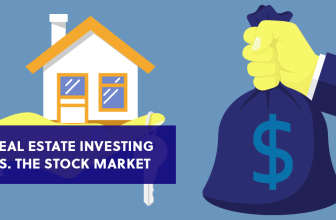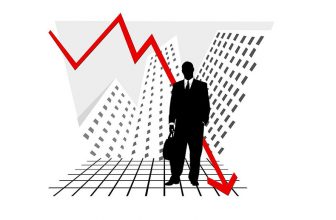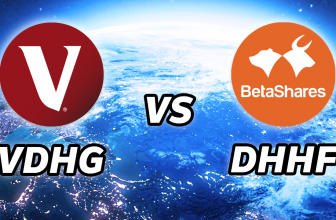In this post I’m going to go over the best ways you can invest $10,000 as an Aussie in 2020 to really make the most of it because $10,000 is a sizable amount of money that could end up making a very significant financial difference long-term if you don’t mess it up. So it’s so important you utilize this money correctly like even finding a way just to get an additional 2% return on your ten thousand dollars every year is going to equate to over $8,100 in extra profit over thirty years and I’m pretty sure if you read the post until the very end you will find a way to maximize that $10,000 to try to get out an extra 2%.
So with that said let’s go over the best ways to invest $10,000 in 2020 and with that I’ll give you a clear-cut guide as to the best ways that you can get the most amount of value from this long term.
1. Set-up An Emergency Fund
So first let’s start with one of the most boring basic practical and safest options for the ten thousand dollars and that would be the emergency fund. Now for those who don’t know an emergency fund is really just the money you set aside to only be used in case of you guessed it an emergency where you have no other place to turn. And ideally the size of this emergency fund should be equivalent to three to six months worth of your living expenses and kept easily accessible for obviously, emergencies.
Now having this type of three to six month emergency funds means you’re not gonna have to rely on credit cards to pay your way through any unexpected event. You won’t have to sell your stocks or other investments to pay for it at a time or maybe they’ve declined in value and it’s not a good time to sell. And you won’t have to take on any high interest rate debt anytime something happens so in a way having this money sitting on the sidelines could end up saving you a lot of money and almost acting as though it’s an insurance if anything is to happen. So if you don’t already have an emergency fund then using some if not all of the $10,000 towards building that up would definitely be one of my biggest recommendations.
Now ideally an emergency fund is something you want to keep completely liquid available at any time you need it and kept very safe so it does not fluctuate up and down in price for me I’ve been recently using Xinja to get myself some of that sweet sweet interest but to be completely honest it doesn’t matter where you go as long as you getting a competitive rate of at least 1.5% return on your money. There’s a whole bunch of banks out there that fit that description perfectly. The main reason I’m using Xinja is because I like to have my emergency fund in a separate bank to my main transaction account and Xinja doesn’t have any restrictions or hurdles you need to jump through in order to unlock their highest savings rate. So it’s perfect for my needs in an emergency fund account.
So the obvious question will be “but Michael I would rather just invest the money instead and get a much higher 2% return and put it in the stock market” And certainly you could go and do that but my rationale is that typically emergencies happen on short notice when you most need the money and if a recession happens you lose your job and by the time you need your money your investments have declined 20% in value then I have a feeling at that time you would have wished you had just kept it in a savings account instead.
2. Pay Down Any High Interest Debt
Then once you’ve built up that three to six-month emergency fund we can go on to the next step the second another somewhat unexciting but could be really profitable way to invest ten thousand dollars is to pay down any high interest rate that you might have. Now obviously if you’re in debt whether it be credit card debt, a mortgage, an auto loan, a personal loan, doesn’t matter if you’re in debt that debt is costing you money. Now of course some debt is good debt if it’s really low interest and that debt is helping you make more money then sometimes it makes sense to keep the debt and then just reinvest the money elsewhere but if you have high interest rate debt that is not making you any money whatsoever then that is the debt that needs to be paid down as soon as humanly possible.
Here’s my reasoning with this one when you invest your money and a broad index fund or in real estate your most investments for that matter on average you would expect anywhere between a 6-12% return on your money. And to get that type of return you’re gonna be risking some years in which you will actually end up losing money on the other hand when you have high interest rate debt just paying down that debt is like getting a guaranteed instantaneous return on your money at whatever rate the interest rate of the debt is. So going and paying off a 20% interest rate on a credit card balance is almost like you getting an immediate guaranteed 20% return on your money with no risk whatsoever. So here’s my basic rule of thumb if you’re paying above 5% interest rates then it’s probably best you just throw as much money at that debt to pay it down as possible because you’re getting a similar return as to what a good investment would generate after paying taxes on it.
So for the way I see if there’s no downside and paying off high interest debt so you may as well just go ahead and do it. If this applies to you and you have any high interest rate debt then I would use that $10,000 and put that towards the highest interest rate loan that you have first and then work your way down from there. Consider that a risk-free guaranteed return on $10,000 and a really good use of your money and then after that we can go on to the next steps.
3. Superannuation
The third here’s where the fun part comes in. Once you’ve set up your emergency funds and you paid off all high interest rate debts, now you could use that $10,000 and invest it within your superannuation account to set you up for the long term. There’s some really awesome tax benefits that apply to your superannuation which makes it something to consider, especially for those that are closer to retirement but really it’s great for anyone.
Making a tax-deductible super contribution is a great way to get the maximum bang for your buck.
Yes, that’s right. You can boost your super and get a tax deduction to sweeten the deal. But as with everything to do with super, there are rules and limits to the government’s generosity.
For starters, you can’t claim a tax deduction for super contributions your employer makes on your behalf. This includes your employer’s 9.5% compulsory super guarantee and any reportable contributions above this amount, including any salary sacrifice arrangements you may have. You also can’t claim deductions for rollover payments from another fund, including foreign funds.
Tax-deductible super contributions are made from your after-tax income. This income may be from a variety of sources such as your take-home pay, savings, an inheritance or from the sale of assets. Whatever the source, you can make a payment to your super fund from your bank account either as a one-off payment or a periodic direct debit.
These contributions count towards your concessional contributions cap, which is currently $25,000 a year unless you are using the carry-forward rule.
Concessional contributions are taxed at the ‘concessional’ super rate of 15% for people on incomes of up to $250,000. For most people, 15% is lower than the marginal tax rate you pay on income. So it’s basically free profit for anyone whose marginal rate is over 15%, which will be most people who have an average job.
For example if you’re earning $80,000 a year. You would already be getting compulsory superannuation payments of $12,000 a year from your employer, which means you could contribute up to $13,000 a year before reaching the concessional contributions cap of $25,000. If you put the entire $10,000 towards contributing to your super. Then after $1,500 (15%) of contributions tax deducted, you would be left with a net contribution to your super of $8,500.
But then you can claim a tax deduction of $10,000 in your next tax return, reducing your taxable income to $70,000 for the year. Your marginal tax rate would be 34.5% (including Medicare levy), which means you would pay $3,450 less in tax. Keeping in mind the $1,500 you paid in the 15% contributions tax, your instant net “profit” would be $1,950.
However with your super it’s extremely important you make sure you have yourself setup for the right investment options. Check out this post if you want some ideas for high-growth superannuation options suitable for people with a while before retirement.
4. Low Risk Low Return Investments
Assuming you’re already way ahead of the curve, you have your emergency fund, you paid off all high interest rate debt, you contributed towards your superannuation cap and now you want to know what to do. Here’s what I would do with $10,000 if you’re saving up for a larger investment or don’t want to take a lot of risk. And that would be using either a term deposit, a high interest savings account, or investing in a bond ETF. Now this one might seem completely counterintuitive because after all the entire point of this post was to find a way to maximise your investment but sometimes you want to save up for something that’s gonna cost you more than $10,000 like buying real estate or investing in a business, or putting your money somewhere else that’s just going to require more than you have right now. That’s where this strategy comes into play: it’s low risk low reward but it’s safe, it’s steady, it’s consistent, and you could continue saving knowing that that $10,000 is not going to go anywhere.
First a high interest savings account is probably the most obvious choice and there’s really no shortage of high interest rate savings accounts out there to pay you higher than a 1.5% return on your money. There’s a lot of options out there. I’m not going to spend too much time on this but I will link to a few of them down below.
- https://xinja.com.au/stash-savings-account/
- https://www.ing.com.au/savings/savings-maximiser.html
- https://up.com.au
- https://www.86400.com.au/save/
But secondly if you know for sure you’re not going to be needing that money any time soon and you need to save up a certain amount in the future you could look into putting that money in a term deposit which will usually give you a slightly higher return. A term deposit is basically a type of savings account where a bank will provide you a fixed rate of return over a fixed time period, anywhere from a few months to a few years. So the return is guaranteed and stable and they are usually higher than savings account rates since you have no liquidity.
However we are in a strange economic environment right now where all term deposit rates are actually lower than rates you can in savings accounts, this basically means that banks think rates are going to continue to stay this low or get even lower, which means the variable rate on your savings account will probably drop over this time.
And third if you want to take a little bit more risk with your money but you also want to play it kind of safe at the same time you also have bonds. A bond is basically an IOU from a government and for the most part bonds are fairly safe for instance we have the Vanguard Australian Government Bond Index ETF (VGB) that has paid around 5% p.a over the long term after all fees. But let me make this clear this is not a risk-free return because the value of the bond could end up going down and the payout could go down because of that. But you could also end up making a little bit more money if it ends up going up. But for someone willing to take slightly more risk in exchange for a slightly higher payout then this might be a decent option today. Nonetheless any one of those three investments would be a great way to spend ten thousand dollars in the event you really just want to keep your investment safe and don’t want to risk it while you’re saving up for something much larger in the future.
5. Index Funds (ETFs)
Now let’s assume you want to do something big with your $10,000 you want to make some moves and you want to turn it into a small fortune in the future but you also don’t want to be stupid with it either. If that’s the case you have index funds. An index fund is basically just something that tracks the overall market and you’ll be able to own a small amount of everything for just one low cost and since index funds track the over market and not just one specific stock it ends up giving you a lot more diversification and a lot more consistent growth long-term. And historically on average the most popular of the index funds which would be VDHG in Australia has produced about an 8% return over the long term.
For most people reading this post I would probably recommend this route. It’s probably the best risk versus reward in terms of how much money you’re going to be making. Not only that but index funds also have a very low fee to them which means more money back in your pocket. That’s because indexes are very easy to put together and they aren’t actively managed so there’s not a lot of overhead and those savings just get passed on to you.
The other advantage of doing this is that most individual investors will end up making more money long term investing in index funds then they will by investing in individual stocks on their own several studies have also suggested that 92 to 95 percent of portfolio managers could not outperform the stock market index over a 15-year period.
And the third advantage of going this route and going with index funds is just diversification. Even if you own 10 or 15 stocks within your portfolio having one of them do really poorly could end up costing you a lot of money. On the other hand if you buy into a broad market index fund you’re gonna be owning a small amount of thousands of different companies.
Lastly the final advantage of index funds is that it’s just easy. You don’t need to spend hours of your time trying to find an undervalued stock, you don’t need to try to wait and try to buy in at the lowest price and try to sell at the very height. All you need to do is really just click a few buttons, buy a total stock market index fund and really that’s it you’re done. For anyone who wants to know which specific index funds to invest in and don’t want to just use VDHG, check out my post where I cover a bunch of alternatives to VDHG that you can think about investing in.
6. Individual Stocks
If index funds are just a little bit too boring for you and you want to take a little bit more risk for a potentially higher reward you could use that $10,000 and invest it in individual stocks. Now this one is by far the riskiest of any of the investments I’ve mentioned in this post but also the payout could potentially be the highest. This is because you’re placing all of your money within a few specific companies and your entire investment is really just dependent on how those businesses do. So if you have a knack for picking stocks and you’re not trading emotionally then this could end up working out really well for you. I personally recommend if you’re gonna be doing this to do this make sure you’re using a low cost broker so you aren’t losing a ton of money through brokerage fees. I’ll link low cost options for both Australian and US stock brokers below:
SelfWealth for Australian Shares (5 free trades using this link): https://secure.selfwealth.com.au/Registration/Plan/5/K23gl
Stake for US Shares (1 free stock using this link): https://hellostake.com/referral-program/?referrer=hyunsukk359
Using these platforms you can trade stocks that you choose and some of the returns that you can get trading individual stocks could greatly outpace anything you could get in an index fund if you pick correctly. Like AfterPay is up over 50% this year but just remember to keep in mind that this is also significantly riskier and you could end up losing a lot of money doing this as well. But if you have an interest in learning the stock market and learning how to trade and you don’t constantly check stock prices and lose sleep over it like I do then maybe picking individual stocks could work out really well for you.
7. Real Estate
Lastly seventh $10,000 is potentially enough money to get started in real estate investing depending on the price point in the area you want to invest in. Now of course realistically chances are if $10,000 is all you have to your name and that’s it you’re probably not going to be investing in real estate with it. There’s so many additional expenses that could come up from this and so many things that could go wrong out of nowhere. So it’s so important that you already have a cash buffer in place also known as an emergency fund to hold you over in the event something happens.
But if you have $10,000 to use specifically towards the down payment that means you could potentially buy a property maybe up to $100,000-$200,000 or so (which is possible in more rural areas) and then rent it out and that could end up making you money several different ways.
The first advantage is that you’re gonna get to borrow most of the money needed to invest this means you could leverage your money and potentially control a $100,000 investment for the low price of $10,000 and then you get to keep all of the profits that property generates like if the property goes up in value ten percent next year that just means you’ve made a 100 percent return on your $10,000 investment and there you go you doubled your money because that’s how math works.
In addition to that if you go and rent out the property for a few hundred dollars a month which would boost your return further. Not to mention all the tax benefits associated with depreciating the property, writing off your expenses, building equity in the property, and also seeing property appreciation.
So obviously the downside here is that real estate is a lot riskier and the barrier to entry is a lot higher. You’re gonna have to have decent income to support a mortgage and you’re gonna have to be very careful about which property you buy.
This is also an actively managed investment which means it’s going to take work on your part but if real estate is your thing you have a lot of control over your investment and you get a lot of tax advantages from doing so and you can end up making a lot of money in the process.
So there you have it those would be my top ways to invest $10,000 for Aussies in 2020. Really it just depends on your risk tolerance and how long you want to invest for but I guarantee one of these ways is going to help you maximize the return of your money when you have it, so that way you could turn it into something huge in the future.







